Travel guide to Sri Lanka

“Welcome to Sri Lanka. Wonder of Asia” was written on the billboard at the Bandaranaike International Airport in Colombo, the capital city of Sri Lanka. The slogan proved itself right. Sri Lanka, formerly known as Ceylon, is a fantastic destination in Asia where you can have it all… Pure nature, wildlife, pristine beaches, cultural heritage, adventures, sports, and spirituality.
I spent 17 full days in Sri Lanka and had an incredible time exploring the island of wonders. Its nature, culture and particularly its people fascinated me. I’ll try to bring this part of the world closer to you by sharing my experiences and hopefully you decide to visit Sri Lanka one day too.
In this blog post I write down everything you need to know before you travel to Sri Lanka. Sort of a brief travel guide to Sri Lanka.
Things to do and see in Sri Lanka
- Explore the cultural heritage of Sri Lanka in Sigiriya, Anuradhapura, Polonnaruwa and Kandy.
- Take the most scenic train ride in Hill Country.
https://www.instagram.com/p/BBt4hdpiKfL/?taken-by=citizenonearth
- Understand contemporary history of Sri Lanka in one of the tea plantations.
- Visit a tea factory to learn about the production of tea.
- Go hiking around Nuwara Eliya and Ella for breathtaking landscapes.
- Visit a traditional dance and fire show in Kandy
- Spot a Leopard in Yala National Park.
- Say hello to Elephants in Minneriya or Udawalawa National Park.
- Go Whale watching in Mirissa.
- Go Dolphin watching in Kalpitiya.
- Enjoy beach life in the South, North, West or East coast.
- Go Surfing in any of the countless bays in the east (Arugam Bay) or south coasts (Weligama Bay).
- Get a Ayurvedic treatment.
- Experience religious spirituality in Buddhist and Hindu temples.
- Eat Kothu Roti to experience the local cuisine.
https://www.instagram.com/p/BBe9w-yiKep/?taken-by=citizenonearth
Travel itinerary for Sri Lanka
Most probably your journey will start and end in Bandaranaike International Airport in Colombo. However the airport is way closer to Negombo which is only 20 minutes away from the airport (taxi for 1000-1500 LKR / 6-10$), while Colombo is 1,5-2 hours away.
My itinerary was as follows:
- Negombo (1 night) just to recover from the flight. Depending on your arrival time you could of course carry on directly to your first stop.
- Dambulla (4 nights) is a perfect base for the cultural triangle. Its bus network is very convenient for visiting Sigiriya, Anuradhapura, Polonnaruwa. Also the Cave Temple in Dambulla is worth visiting.
If you don't have enough time you could skip Anuradhapura and visit Sigiriya and Polonnaruwa at the same day.
- Kandy (2 nights) to visit the Temple of the Sacred Tooth Relic, Botanical Garden and a traditional dance and fire show. Kandy is also the place where you catch the train to Nuwara Eliya or Ella.
If you don't have enough time you could do all this in one day or skip Botanical Garden.
- Nuwara Eliya (3 nights) for hiking in Horton Plains, to take a trip to tea estates and a tea factory and to see many waterfalls.
- Ella (1 night) for hiking to Little Adam’s Peak, to see the Nine Arch Bridge and Rawana Waterfall.
- Tissamaharama (1 night) for the safari in Yala National Park.
- Weligama (4 nights) to live a beach life and eventually go on whale watching and surfing.
- Transfer to Airport: As my flight was at 3am I had plenty of time to reach the airport which is why I decided to stay in Weligama. Depending on your flight time you should consider staying in Negombo the day before your flight.
For a detailed travel itinerary read my blog post 2 weeks in Sri Lanka.
Getting around in Sri Lanka
Tuk Tuk
These auto rickshaws are the most common vehicles for short distances. You can find them everywhere anytime. 10 minutes drive costs 150-200 LKR and 30 minutes drive costs 500 LKR.
Always ask how much it is before you get in and don’t settle on the first price they offer if you think it is overpriced. There is always plenty of other tuk tuk drivers so that you can ask another one if you can’t agree with the first one.
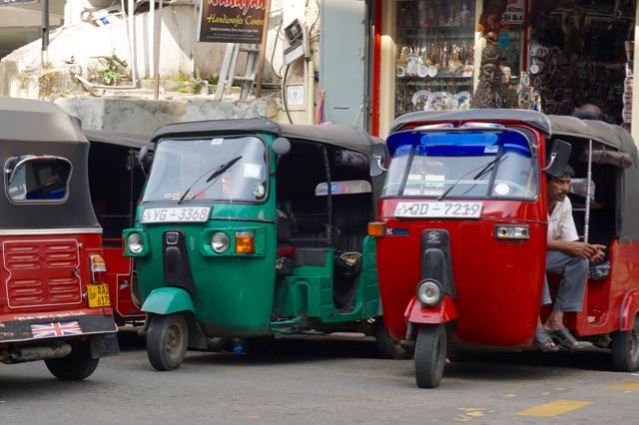
Train
The railway network in Sri Lanka is pretty good. The trains are not the fastest or newest but totally sufficient. It is definitely one of the highlights you need to do in Sri Lanka. Sitting on the doorway or hanging out of a window made me feel like a child again.
https://www.instagram.com/p/BBzp4uFiKRg/?taken-by=citizenonearth
- 1st class: It is air conditioned with closed windows and doors which means no fun! There is supposed to be an observation car for the 1st class also, where you can sit outside on the observation deck, but I haven’t seen one of those.
- 2nd class with reserved seats: There is only a small amount of seats but the most favoured option by the tourists which means it is difficult to get tickets. For the most popular route from Kandy to Ella via Nuwara Eliya (Nanu Oya) you need to buy the train tickets in advance (3-6 days). Unfortunately there is no online service and you can buy tickets for other stations only in big train stations such as Colombo and Kandy. Nevertheless, there are private agencies which you can contact to buy tickets for you.
- 2nd class: You can buy the tickets at the counter 1-2 hours before departure. These are unlimited which means the train gets full, especially if you’re traveling during weekend or public holidays. But if you’re lucky someone gets off and you’ll have a seat.
- 3rd class: This is the place where you’d be surprised to see how many people fit in one train car.
For the best and most up to date information check Seat61.
Tip: From Kandy to Ella take the 11:10 train which is less crowded and you shouldn't drive the whole way to Ella (7hours). Have a stopover in Nuwara Eliya (4hours) for couple of days which is as beautiful as Ella, if not even more.
Read next: Scenic Train ride in Sri lanka
Bus
There are 2 types of busses.
Normal buses are big public busses which stop almost everywhere to get more passengers even when you think there is no more space in the bus. All doors and windows are open so that there is enough air circulation while driving, but when it is not then it gets incredibly hot. Avoid it during the weekend and public holidays. It is very cheap (2 hrs drive 90 LKR).
Air conditioned busses are smaller but faster as they don’t stop everywhere. There are no people standing. If the seats are all occupied they don’t get any more passengers. It costs almost the double but still cheap (2 hrs drive 185 LKR). However they don’t drive in all routes and not as frequently as the normal busses.
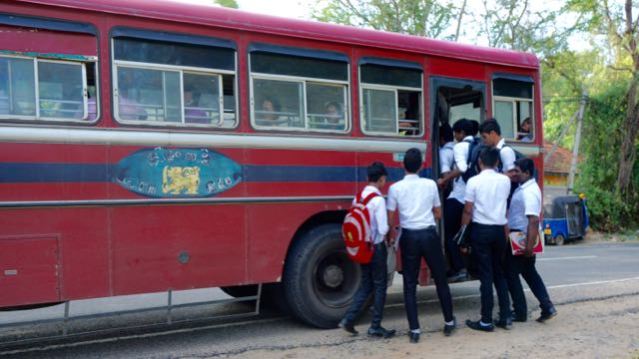
Others
You can rent a scooter or a car or even your own tuk tuk which I did NOT because of the crazy fellow Sri Lankan drivers and bad road conditions. Plus driving on the left side… Meh…
What to eat & drink in Sri Lanka?
- Drinks: Tea (of course, what else), Lassi (yoghurt based drink), fresh fruit juices (my favourite is passion fruit), king coconut (don’t forget to eat the coconut itself afterwards), Lion Lager Beer (the local beer), Arrack (a distilled spirit made from coconut).
- Kothu Roti: My favourite dish! Kothu means chopped and Roti means flat bread. Kothu Roti is basically chopped roti with vegetables, meat, and spices, lots of hot spices…
- Rice and Curry: Boiled or fried rice is served with 3-4 bowls containing vegetable curry (mostly green beans), meat curry (mostly chicken or fish), Dhal (spicy lentils), and Papadums (thin crisps), as side dish. Also Sambols are served as side dishes, which are definitely the most spicy part of the whole meal.
- Fried rice or noodles with vegetables and meat
https://www.instagram.com/p/BBu1JtBCKTs/?taken-by=citizenonearth
- Vegetable Roti: My favourite snack! Spicy vegetables wrapped in roti in form of a triangle. Super yummy.
- Coconut Roti (pol roti): It is a thick flat bread cooked with coconut. It is served for breakfast with coconut or chilli sambol (lunu minis).
- Hoppers: These are yummy bowl-shaped thin pancakes made from rice flour. They are served mostly for breakfast with some spicy sambol and chutney
- Spring Hoppers: It is made from rice noodles curled into flat spirals. It is served for breakfast with a thin fish or chicken curry, dhal, and fresh chutney.
Spicy means HOT! Even if you can eat hot, order rather "medium" to be on the safe side :)
Where to stay in Sri Lanka?
Guesthouses, Homestays, and Bed&Breakfasts are the best type of accommodation to support local businesses and to meet locals who are mostly the best guides for that area. The prices are between 20-50US$ for a double room with a private bathroom.
You can find plenty of price-worthy offers at Booking.com or Agoda.com. Don’t forget to read the reviews!
I stayed at:
- Negombo: Villa Taprobane (organises pick up from the airport and servers yummy breakfast)
- Dambulla: Sevonrich Holiday Resort (super friendly host who helps with organising the day trips in cultural triangle)
- Kandy: Primrose Inn (Homestay with a Sri Lankan family who returned to Sri Lanka after long time living in New Zealand and Africa as English teachers, etc.)
- Nuwara Eliya: Kings Park Villa (good location with helpful staff and the best shower I had in Sri Lanka)
- Ella: Leisure Dream Inn (nicely decorated room with a breathtaking view from the terrace and BEST breakfast I had in Sri Lanka)
https://www.instagram.com/p/BB1JundiKWu/?taken-by=citizenonearth
- Tissa: My Village (very stylish hotel with spacious rooms)
- Weligama: Highland Villa (pretty expensive but perfect place to relax before going back home thanks to its location on a hill far from the busy streets)
When to go to Sri Lanka?
The climate and weather in Sri Lanka is tropical with seasonally monsoon rains. I was there in February and it was very hot with high humidity except the Hill Country where it cools down to 15°C after sunset.
Seasons in Sri Lanka
- Low Season (May–Aug): It is rainy in the South and West coast and in the Hill Country, while the North and East have the best weather conditions.
- Shoulder (Apr & Sep–Nov): Everywhere in Sri Lanka you have the best weather conditions and less tourists.
- High Season (Dec–Mar): It is the dry season in the West and South coasts and in the Hill Country which is why it is the most favoured season by tourists. The North and East coasts might be rainy.
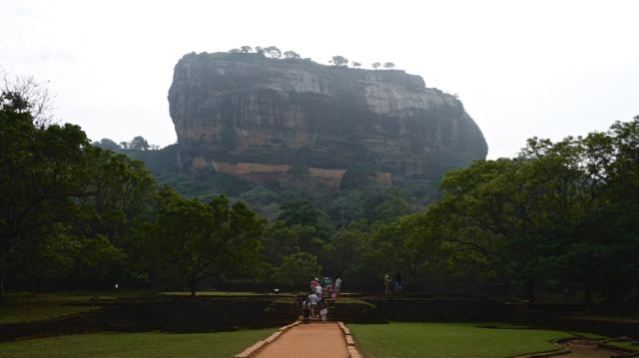
Sigiriya Rock
Do you need a visa for Sri Lanka?
Yes, you do. It costs 35$ and it is super easy to get the visa for Sri Lanka online. You could also go for “visa on arrival” if you want to wait in a queue after a long flight.
Check the official website of the Sri Lankan government to apply for an electronic visa. It is called ETA.
Money matters in Sri Lanka
The local currency is Sri Lankan Rupees (LKR). The exchange rate is currently 1$=144 LKR | 1€=158 LKR (Feb 2016). For most up to date rates check XE.com. XE.com has also an app which can be used in offline modus.
When you arrive at the airport, first thing, you should exchange money in one of the exchange offices just outside the main door or use your credit card to get local currency from the ATMs.
ATMs can be found anywhere. VISA is the most common one. AMEX owners can use the ATMs of Nations Trust Bank.
Health precautions for Sri Lanka
You should consult with your doctor first, but generally recommended travel vaccinations for Sri Lanka are as follows:
In my blog post you can read about Which Travel Vaccinations do you need?
Before I forget… there are too many stray dogs in Sri Lanka, so make sure you have the Rabies vaccination and be careful about the dogs at all time. They are mostly very calm and only want to sniff you, but I got scared by some which were snarling pretty scary.
Language skills for Sri Lanka
There are two main local languages in Sri Lanka, Sinhala (official) and Tamil. With English however you’ll be doing just fine.
I only managed to learn following two, which caused wide smiles on the faces of the locals.
- Ayubowan: Hello | good bye | good day, which literally means “Live a long life”
- Istuti: Thank you
How expensive is it to travel in Sri Lanka?
Eating and drinking in local restaurants is cheap. One portion Kothu Roti costs usually 100-150 LKR. 1 Lt. bottle of water costs 70-100 LKR. 1 bottle of Lion beer is about 240-300 LKR.
Accommodation can be pricy depending on the season.
Getting around with local transport is also very cheap. 10 mins tuk tuk drive costs approx. 150 LKR. 2 hours bus drive costs 90 LKR. The 2nd class (without reserved seats) train ticket from Kandy to Ella costs 160 LKR.
The highest spendings are mostly the entry tickets for the sights. Sigiriya costs 30US$, Ancient cities Anuradhapura an Polonnaruwa cost 25US$ each, the entry to Horton Plains costs almost 3000 LKR.
Even more upsetting is the huge difference of the prices for the locals and foreigners. It is maybe ok to have different pricing (e.g. 40 vs. 3000 LKR) but does it need to be that high? Really?
The downside of it all is that most of the sights are not well maintained and the tourists feel ripped off by the Sri Lankan Tourism Board.
https://www.instagram.com/p/BBuTHphiKZ_/?taken-by=citizenonearth
What to wear in Sri Lanka?
Sri Lankan people are very religious as far as I could observe. As long as you are not at the beach you should dress appropriately.
Wear long trousers or skirts to cover your knees and wear t-shirts which cover your shoulders, especially when visiting sacred temples and ancient cities.
You’ll be asked to remove your hat and shoes (yes even flip flops) when entering temples and similar sights. Stone floors and sandy grounds can get really really hot, so you better carry a pair of socks with you.
White colour is sacred in Buddhist religion, so try to wear white colours when visiting temples.
Check my pack list for useful travel items.
Cultural considerations in Sri Lanka
In temples and sacred sights
- Take your hat and shoes off. You won’t be allowed to carry your shoes in your hands, so you’ll leave them outside the temple. In bigger temples there are counters to store your footwear. Don’t forget to bring socks!
- Wear white cloths
- Don’t turn your back to Buddha statues. Which means no selfies in front of Buddha statues.
- When you walk around keep the sacred building or Buddha statues on your right side.
Others
- Sri Lankan people eat with their hands and (as in many cultures) the left hand is considered as the dirty hand. So in case you want to eat with your hands you should use your right hand. Using cutlery is the most convenient way if you’re left handed like me 🙂
- The head bobble means more or less OK, yes, no problem, etc.
- Don’t touch the monks.
- When greeting people bow yourself slightly and hold your hands pressing to each other front of your head. Hand shaking is also ok.
- The front seats in trains and busses are reserved for clergy.
- Ask people if you can take a picture of them.
https://www.instagram.com/p/BBo0KEEiKVl/?taken-by=citizenonearth
Phone & Internet in Sri Lanka
Dialog offers a prepaid SIM card for only 300LKR. You can add minutes (100LKR for 100 min.) and internet (100LKR for 600MB).
It is very convenient to have a local phone number to call guesthouses, guides, etc. Besides having internet makes many thing easier. For example explaining your Tuk Tuk driver where your guesthouse is 🙂
Is it safe to travel in Sri Lanka?
Absolutely. I didn’t have one single moment where I felt unsafe.
Generally I’d say be cautious, trust your instinctive and common sense. Don’t carry too much money, keep your valuables in the hotel room in the safe. If the hotel room doesn’t have a safe use Pacsafe Travelsafe 12L. Also don’t forget to carry a torch when walking at nights in rural areas.
How are the people in Sri Lanka?
The people makes this country even more beautiful. They are modest, polite, friendly, humorous and helpful at all times. In the rather not busy streets people smiled and greeted us when we passed by, which surprised me every time. As a big city person I’m not really used to that.
To go or not to go?
My answer is clearly YES, GO! Go and meet the beautiful people of Sri Lanka.
What to pack for Sri Lanka?
- Steady Shoes for hiking
- Good (video) camera to capture the beautiful landscapes
- Fleece Jacket for cool evenings and mornings in Hill Country
 Check my Pack List for more useful travel items! By buying products or booking accommodation with these links you’ll be supporting my blog without paying anything extra. Thanks already ❤️
Check my Pack List for more useful travel items! By buying products or booking accommodation with these links you’ll be supporting my blog without paying anything extra. Thanks already ❤️


For more insights from real pros I recommend Lonely Planet's Travel Guide for Sri Lanka. For price worthy accommodation check Booking.com or Agoda.com.
Pin it for later!
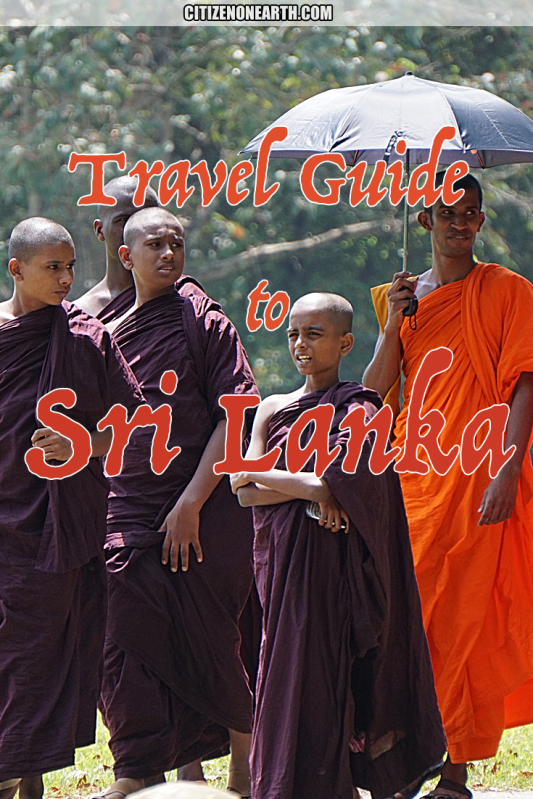
Share it if you like what you read ❤️






















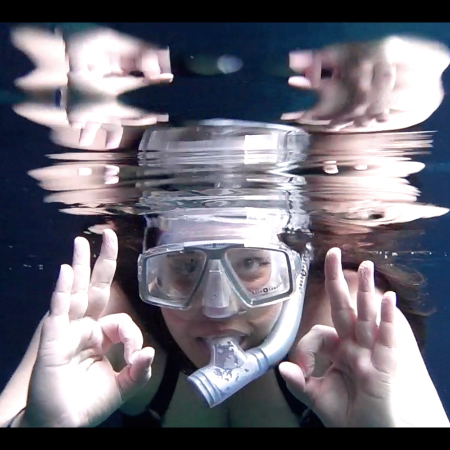
This blog post is so, so useful! Thank you for sharing 🙂 Your posts are always great!
LikeLiked by 1 person
So sweet of you! Thank you so much for kind words. You made my day!
LikeLiked by 1 person
Your page is so informative! How did you get from Negombo to Dambulla? Thank you! 🙂
LikeLiked by 1 person
Thanks Veronica! I believe in this blog post https://citizenonearth.com/2016/03/07/2-weeks-in-sri-lanka-travel-itinerary/ you can find exactly the information you need. If not just let me know again 😉
LikeLike
When is the best time to travel in Sri Lanka?
LikeLike
It is getting difficult to say anything about the weather nowadays thanks to climate change but if you trust the average data November – April seems the be the best time for the west and south coast. After that you have the monsoon season.
LikeLike